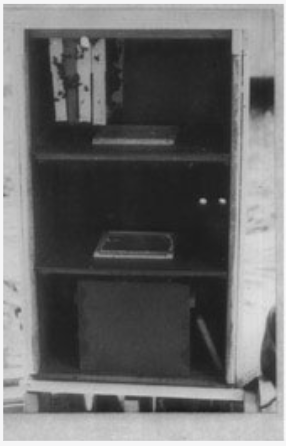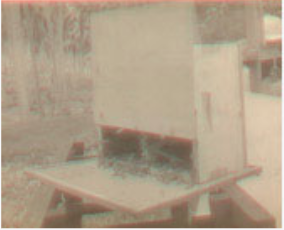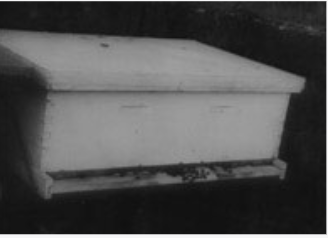OUR BEEKEEPING
- Joel Magsaysay
- Feb 24, 2018
- 3 min read

Starting in Honeybees
I started keeping honeybees in Mandaluyong, Metro Manila, in the late 1970's. It began as a hobby, with two colonies in my mother's garden.
There were many attempts to develop a technology heretofore untried, untested. Very few were interested in honeybees.
Early attempts…
One day, there were crawling and dead bees all over the garden. They must have been poisoned.
Next day, we were on our way to Tagaytay, Cavite. A friend of a Ian Aranza, who got me started in beekeeping, was building a house there. We met Mike Harpst, who graciously agreed to let us bring our bees there.

Thus began the start of my lifetime adventure with honeybees.
We "contract pollinated" the first Acacia mangium stand in the Philippines, which yielded seed sold to Malaysia for reforestation.

We pollinated Japanese buckwheat – tasting a little buckwheat honey. It was dark and rich.
Nowhere was too far to move our bees. We travelled as far as Mindoro, Arayat, Batangas, Los Banos, Laguna and Cavite. We were able to harvest a ton of honey from only 10 colonies.
I had caught "bee fever". Incurable.

Several years later, I met Violaine Valera, she was keeping one colony of bees in her front yard in Quezon City. I offered to teach her. After seven months, we were married…………. Ian gave us a few colonies as a wedding gift and we promptly loaded them in our old bee trailer……..it was a Honey moon!

In 1989, Dr. Ike Payawal and Dr. Cleo Cervancia of the University asked us, "if beekeeping has that much promise, how come we do not have a local beekeeping industry?"
"An industry has to be a joint effort between private individuals and institutions," was our answer. Thus was born the UPLB Bee Program in 1989.

Sammy Tonido was one the UPLB Bee Program's first beneficiaries.

The UPLB Bee Program has been training people from all walks of life: educators, students, professionals, farmers………



And invited our supplier to visit us here. Thus was launched Royal Bee Corp. Where we used our expertise in a carpentry shop…

We exported package bees to the Middle East. Here I am with Ian Aranza, preparing the package bees for export.

In 1994, we parted ways with RBC. We were penniless.
Rather than feel forlorn, defeated or forsaken, we felt exhilarated and hopeful. Note the few beehives, but the many beehive stands.
ILOG MARIA HONEYBEE FARMS WAS BORN

We grew...




Escorts of which we sent to UPLB for disease analysis…………

And many other queen suppliers too many to enumerate here. We bred from the best of them. This had an immediate and lasting effect on our own bee operation. We produced lots of honey…

And supplied many more bee projects nationwide, providing the necessary technical know-how…………
To seed farms, here at East West Seed Co…




Even finding time to catch some deadly Apis dorsata or pukyutan

Since 1988, we have been teaching many people from all walks of life, how to keep honeybees. Some of them have been:
Farmers in Indang, Cavite.

Steve Herrera of Bangkaan, Naic, Cavite. Here he is with his son. Holding a full frame of honey. Note that they are wearing NO protective clothing. Steve has gone to Canada as a beekeeper.

1991. ATDC or Apiculture Training and Development Center of Don Mariano Marcos Memorial State University of Bacnotan, La Union. ATDC has apiculture projects in Benguet. Here we are: Dr. My brother in law Greg Ira from International Institute for Rural Reconstruction. Apolonio Sito, Dr. Preston Dazon and Rey Lacquedan, inspecting colonies is Kesbeng, Benguet. Note the precarious perch of the beehives on newly excavated mountainside.

Farmers in Tanudan, Kalinga

Our topnotcher Peter Heiss of Susana, Heights, San Pedro……who managed to harvest 90 kilograms of honey from a single colony.


Getting some tips on how to control varroa mites from Otto And Gudrun Koeniger… the inventors of the miticide Apistan..here shown with Cleo Cervancia of UPLB

Fr. Rene Ramirez and friend…

Tonton and Mylene Mapa and kid… harvested some eucalyptus honey from Alabang Hills…..
















Enhance your career with Data Analytics Training in Pune at WebAsha Technologies. Our expert-led program equips you with essential analytical skills, practical knowledge, and industry-relevant tools to master data-driven decision-making. Gain hands-on experience, real-world project exposure, and guidance to excel in the competitive analytics field. Join our comprehensive training to unlock new career opportunities.
WebAsha Technologies is a premier Power BI Training Institute in Pune, known for its cutting-edge curriculum and expert trainers. We provide an immersive learning environment where students can develop the skills needed to excel in data analytics. Our institute offers hands-on training, real-world projects, and placement assistance to ensure your success in the competitive business intelligence domain.
The Leather Biker Jacket is a timeless symbol of edgy style and bold attitude. With its rugged design, premium leather craftsmanship, and attention to detail, this jacket is perfect for turning heads on the road or making a statement in any setting. Elevate your wardrobe with this classic piece!
What a delightful insight into the world of beekeeping! 🐝🌼 Your passion for these incredible creatures and their vital role in our ecosystem shines through. It's inspiring to see how much can be learned from maintaining hives. At Industrial Cart, we support sustainable practices and provide quality tools for all kinds of projects. Must Visit us Industrial Cart for the best tools to enhance your gardening and beekeeping endeavors!